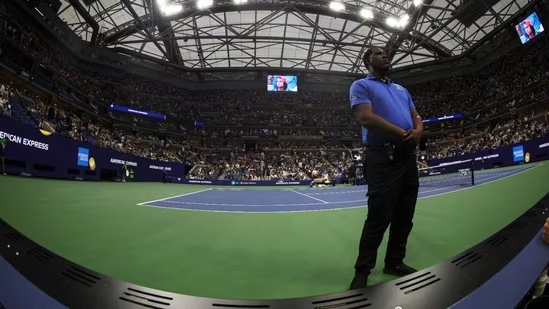The glaring gap in Indian tennis
Rohit Rajpal, India’s Davis Cup captain, highlighted his “worry” before India’s home World Group playoff win against Denmark in March. “There is a gap in Indian tennis at this moment,” Rajpal, also the treasurer of the All India Tennis Association, said.  PREMIUM
PREMIUM
Months later, with India again pushed down to the playoff stage after defeat to Norway over the weekend, that gap is even more glaring.
Except Karman Kaur Thandi igniting some spark with her first-round win in the WTA Chennai Open last week to go with her ITF title earlier, it’s been a muted year in Indian tennis (leaving aside Rohan Bopanna’s doubles upturn).
No Indian has made the singles main draw of a Grand Slam this season, Sumit Nagal being the last presence at the 2021 Australian Open. Nagal is yet to get going after a hip surgery, while the likes of Ramkumar Ramanathan, Prajnesh Gunneswaran and Ankita Raina have all steeply slid to the extent that there’s no Indian in the top-200.
And yet, these are the players that keep getting picked for India in the Davis Cup or Billie Jean King Cup. Simply because there’s no one else knocking on the door, let alone breaking it down. Three of the four guys below Nagal in the 500 rankings region are above 25. So are two of the four placed after Karman and Ankita.
It turns our focus to the junior talent pool, which isn’t exactly brimming either. Only two Indians, Aman Dahiya (French Open) and Shruti Ahlawat (Wimbledon), played in the junior Slams this season, both losing in the first round. They’re the top-ranked juniors in the country, the former at 100 and the latter at 116 in the ITF rankings.
‘Need for non-glamorous events’
Where the Indian tennis ecosystem could course correct and see more immediate results—over and above the lack of structure, support and finance—is by bringing more tournaments into the country.
“I don’t think there’s a talent drought in India. But we aren’t giving our talent enough opportunities in terms of competitions at home,” Vishaal Uppal, former Davis Cupper and captain of the women’s BJK Cup team, said. “We need to look at upgrading the junior tournaments and bringing more ITF events.”
The last two ITF women’s events in India — held back-to-back in Gurugram in June-July — were won by Indians: Karman and Sahaja Yamalapalli. Karman jumped from 494 to 387 in the rankings after the win, Sahaja from 989 to 574, and six unranked Indians got into the charts after those two weeks. As hosts, Indian boys won the Junior Davis Cup Asia/Oceania Final Qualifying tournament to qualify for the World Finals.
The quality and quantity of ITF events in India, however, has declined. Of the 14 junior ITF events in India this year, only two are J2 level while the rest are lower (J1 is the highest category and J5 the lowest). For the men and women, India hosted seven tournaments each. Tunisia, which now boasts of world No 2 Ons Jabeur, went from hosting four ITF women’s events in 2012 to 51 in 2019.
“Indian tennis needs those non-glamourous events,” Uppal said. “Our focus needs to be on how we can get unranked players into rankings, the 2000s to 1500s, the 1000s to 750s, the 500s to 200s and the 200s to 100. We need to stop romanticising that we need to produce Grand Slam champions. We first need to get people into Grand Slams.
“Host 20 tournaments for men and women every year, and you’ll start seeing a difference in three years. There will be more players ranked higher,” he added.
‘Better picture in two years’
The pandemic has created a bigger hole due to lack of tournaments and prolonged travel hassles, especially in parts of Asia. “We lost out on an entire batch and seeing how they are. Those who are in their 20s now and without ATP or WTA points, they have to start from scratch,” Balachandran Manikkath, one of India’s top coaches, said.
It again turns our focus to the juniors, and to talents like Dahiya, 18, Ahlawat, 19, and 14-year-old Manas Dhamne to step up in the next few years. “Challenges like lack of funds and home tournaments remain, but these youngsters have to be guided carefully, in terms of charting their progress ladder, what tournaments they play, at what level, who they train under etc. They need some time,” Manikkath said.
“By the end of the next year or two, we will have a better picture about our next talent pool coming out,” he added. “This current gap, well that is there. And we cannot close it now.”
Experience unrestricted digital access with HT Premium
Explore amazing offers on HT + Economist Start 14 Days Free Trial Already Subscribed? Sign In
Disclaimer: The copyright of this article belongs to the original author. Reposting this article is solely for the purpose of information dissemination and does not constitute any investment advice. If there is any infringement, please contact us immediately. We will make corrections or deletions as necessary. Thank you.







